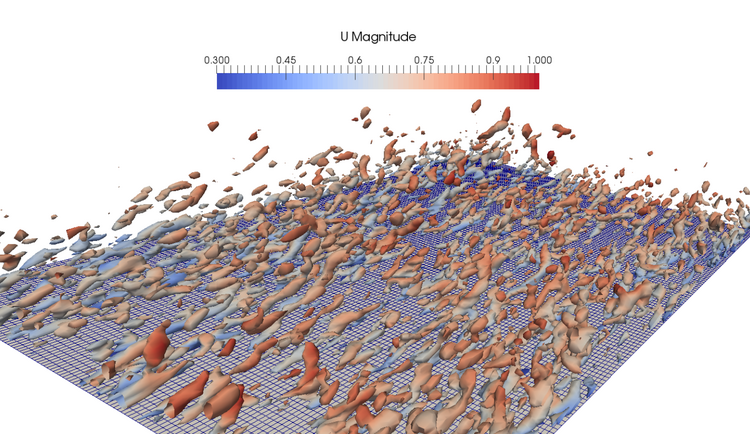Turbulence Models
Turbulence Models
Aerodynamic applications in wind energy field usually obtain high Reynolds number. Besides, the interaction between e.g. the rotor blades and the flow, separation and vortices appear. For which, the turbulence modeling becomes a crucial issue in the CFD development. On the one side, due to the extremely high demands of the computational resource, direct numerical simulation (DNS) and large eddy simulation (LES) are not affordable for complex situations. On the other side, the classical RANS (Reynolds averaging Navier Stokes) solution fails due to the rapid unsteadiness and anisotropic representations of turbulent characteristics.
Thanks the advancing computational technology, the hybrid modeling strategy becomes the upcoming methodology dealing with complex flow configuration in a turbulent state. The principle of the hybrid method combines the advantages of RANS and LES. The modeling portion of RANS is suppressed and adaption to the applied mesh resolution is realized in an arbitrary manner. This results to a high RANS portion in the near wall area and an eddy resolving representation in the free stream region.
Based on different coupling strategies, the hybrid eddy resolving method can be classified to PANS (Partially averaged Navier Stoke), DES (Detached Eddy Simulation), VLES (Very Large Eddy Simulation) and SAS (Scale Adapted Simulation). Our main focus are the characteristics of turbulent flow and the improvement of the simulation quality by applying the corresponding turbulence models.

